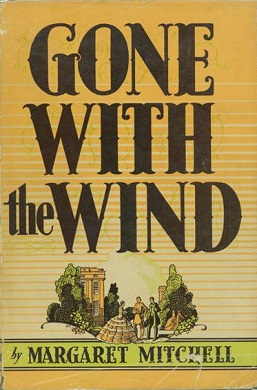
Gone with the Wind is a novel by American writer Margaret Mitchell, first published in 1936. The story is set in Clayton County and Atlanta, both in Georgia, during the American Civil War and Reconstruction Era. It depicts the struggles of young Scarlett O'Hara, the spoiled daughter of a well-to-do plantation owner, who must use every means at her disposal to claw her way out of poverty following Sherman's destructive "March to the Sea". This historical novel features a coming-of-age story, with the title taken from the poem "Non Sum Qualis eram Bonae Sub Regno Cynarae", written by Ernest Dowson.

Uncle Tom's Cabin; or, Life Among the Lowly is an anti-slavery novel by American author Harriet Beecher Stowe. Published in two volumes in 1852, the novel had a profound effect on attitudes toward African Americans and slavery in the U.S., and is said to have "helped lay the groundwork for the [American] Civil War".
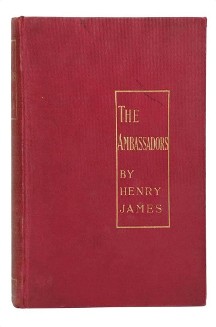
The Ambassadors is a 1903 novel by Henry James, originally published as a serial in the North American Review (NAR). The novel is a dark comedy which follows the trip of protagonist Lewis Lambert Strether to Europe to bring the son of his widowed fiancée back to the family business. The novel is written in the third-person narrative from Strether's point of view.
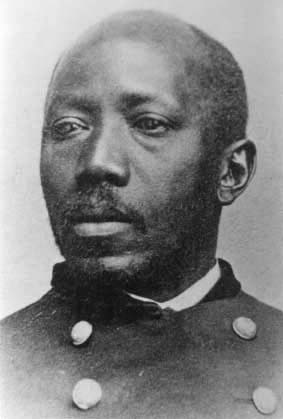
Martin Robison Delany was an American abolitionist, journalist, physician, military officer and writer who was arguably the first proponent of black nationalism. Delany is credited with the Pan-African slogan of "Africa for Africans." Born as a free person of color in Charles Town, Virginia, now West Virginia, and raised in Chambersburg and Pittsburgh, Pennsylvania, Delany trained as a physician's assistant. During the cholera epidemics of 1833 and 1854 in Pittsburgh, Delany treated patients, even though many doctors and residents fled the city out of fear of contamination. In this period, people did not know how the disease was transmitted.
The Natchez District was one of two areas established in the Kingdom of Great Britain's West Florida colony during the 1770s – the other being the Tombigbee District. The first Anglo settlers in the district came primarily from other parts of British America. The district was recognized to be the area east of the Mississippi River from Bayou Sara in the south and Bayou Pierre in the north.

Iola Leroy, or Shadows Uplifted, an 1892 novel by Frances E. W. Harper, is one of the first novels published by an African-American woman. While following what has been termed the "sentimental" conventions of late nineteenth-century writing about women, it also deals with serious social issues of education for women, passing, miscegenation, abolition, reconstruction, temperance, and social responsibility.

Mandingo is a novel by Kyle Onstott, published in 1957. The book is set in the 1830s in the Antebellum South primarily around Falconhurst, a fictional plantation in Alabama owned by the planter Warren Maxwell. The narrative centers on Maxwell, his son Hammond, and the Mandingo slave Ganymede, or Mede. Mandingo is a tale of cruelty toward the black people of that time and place, detailing the overwhelmingly dehumanizing behavior meted out to the slaves, as well as vicious fights, poisoning, and violent death. The novel was made into a film of the same name in 1975.
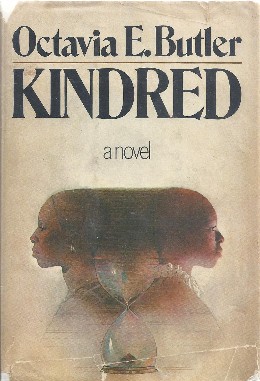
Kindred (1979) is a novel by American writer Octavia E. Butler that incorporates time travel and is modeled on slave narratives. Widely popular, it has frequently been chosen as a text by community-wide reading programs and book organizations, and for high school and college courses.
The plantations of Leon County were numerous and vast. Leon County, in the U.S. state of Florida, was a true cotton kingdom. From the 1820s through 1850s Leon County attracted cotton planters from Georgia, Virginia, Maryland, North and South Carolina, plus other states and abroad to its fertile red clay soils and long growing season.

Tarzan the Tiger (1929) is a Universal movie serial based on the novel Tarzan and the Jewels of Opar by Edgar Rice Burroughs. It stars Frank Merrill as Tarzan, Natalie Kingston as Jane, and Al Ferguson. It was directed by Henry MacRae.

Black science fiction or black speculative fiction is an umbrella term that covers a variety of activities within the science fiction, fantasy, and horror genres where people of the African diaspora take part or are depicted. Some of its defining characteristics include a critique of the social structures leading to black oppression paired with an investment in social change. Black science fiction is "fed by technology but not led by it." This means that black science fiction often explores with human engagement with technology instead of technology as an innate good.

The Slave Community: Plantation Life in the Antebellum South is a book written by American historian John W. Blassingame. Published in 1972, it is one of the first historical studies of slavery in the United States to be presented from the perspective of the enslaved. The Slave Community contradicted those historians who had interpreted history to suggest that African-American slaves were docile and submissive "Sambos" who enjoyed the benefits of a paternalistic master–slave relationship on southern plantations. Using psychology, Blassingame analyzes fugitive slave narratives published in the 19th century to conclude that an independent culture developed among the enslaved and that there were a variety of personality types exhibited by slaves.
John Andrew Jackson was an American abolitionist in the nineteenth century. He was born into slavery on a country plantation in Sumter County, South Carolina. His escape north to Canada may have been one of many slave experiences that inspired Harriet Beecher Stowe's Uncle Tom's Cabin. During the American Civil War, Jackson published The Experience of a Slave in South Carolina (1862) while in Great Britain.
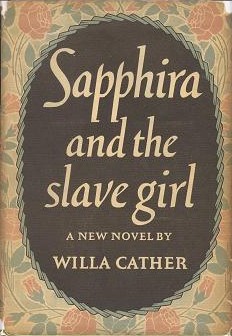
Sapphira and the Slave Girl is Willa Cather's last novel, published in 1940. It is the story of Sapphira Dodderidge Colbert, a bitter white woman, who becomes irrationally jealous of Nancy, a beautiful young slave. The book balances an atmospheric portrait of antebellum Virginia against an unblinking view of the lives of Sapphira's slaves.

Lakeport Plantation is a historic antebellum plantation house located near Lake Village, Arkansas. It was built around 1859 by Lycurgus Johnson with the profits of slave labor. The house was restored between 2003 and 2008 and is now a part of Arkansas State University as a Heritage site museum.
William Hamilton was a prominent African-American orator and civil rights activist, based in New York City. He was born to a free black woman and was reputed to be a natural son of Alexander Hamilton, the Founding Father. William Hamilton is best known as a leader in the first wave of American abolitionism.
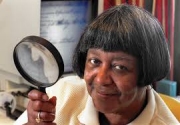
Agnes Kane Callum was a genealogist known for her research into Maryland's African-American history. She was a founding member of the Baltimore Afro-American Historical and Genealogical Society, a frequent columnist for The Catholic Review, and the founding editor of a black genealogical journal, Flower of the Forest. Callum was inducted into the Maryland Women's Hall of Fame in 2014.

Robert Campbell was a Jamaican-born emigrant from the United States to Nigeria who wrote books and published a newspaper. Initially apprenticed to a printer he trained as a teacher in Spanish Town. Finding his salary insufficient in the economic turmoil of post-abolition Jamaica he emigrated to Nicaragua and Panama before settling in New York City in 1853. He found work as a printer before being employed as a science teacher and then assistant principal at the Institute for Colored Youth in Philadelphia, Pennsylvania.

The Anglo-African and The Weekly Anglo-African were periodicals published by African American abolitionist brothers Thomas Hamilton (1823–1865) and Robert Hamilton (1819–1870) in New York City during the American Civil War era. For a short period, one paper was also named the Pine and Palm.















